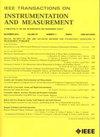A MEMS-INS/GNSS Integrated System With FM Radio Signal-Aided Distance Increment Estimation During GNSS Outages
IF 5.6
2区 工程技术
Q1 ENGINEERING, ELECTRICAL & ELECTRONIC
IEEE Transactions on Instrumentation and Measurement
Pub Date : 2024-10-16
DOI:10.1109/TIM.2024.3481531
引用次数: 0
Abstract
The global navigation satellite system (GNSS) and inertial navigation system (INS) integrated navigation can realize accurate and reliable positioning for land vehicles. However, during GNSS outages, the cumulative errors caused by inertial sensors pose a threat to the GNSS/INS integrated system, especially when low-cost microelectromechanical system (MEMS) inertial sensors are utilized. The existing methods usually apply nonholonomic constraint (NHC) and machine-learning (ML)-/deep-learning (DL)-based modeling techniques to constrain the errors. Nevertheless, the performance of using NHC alone is limited if the forward velocity is not accurate enough, so additional constraints are needed, while the existing ML-/DL-based modeling techniques only utilize acceleration or angular velocity features, which are still susceptible to the stochastic errors of MEMS sensors. In this article, an ML-based modeling technique combining acceleration and frequency modulation (FM) radio signal is applied to further improve the performance of NHC-constrained MEMS-INS/GNSS integrated system. First, we derive the relationship between the received signal strength indicator (RSSI) of FM signal and vehicle distance increment to provide theoretical basis for the proposed algorithm. Then, FM signal features related to distance increment are extracted. Afterward, an availability assessment strategy is proposed to eliminate the moments when errors of using RSSI are large. Subsequently, we apply support vector regression (SVR) to estimate distance increment by combining FM signal and acceleration features. Finally, extended Kalman filter (EKF) is applied to fuse the predicted distance with INS during GNSS outages. Results show that the introduction of FM signal can significantly reduce distance estimation errors, thus improving positioning performance.在全球导航卫星系统中断期间利用调频无线电信号辅助距离增量估算的 MEMS-INS/GNSS 集成系统
全球导航卫星系统(GNSS)和惯性导航系统(INS)集成导航可为陆地车辆实现准确可靠的定位。然而,在全球导航卫星系统中断期间,惯性传感器造成的累积误差会对全球导航卫星系统/惯性导航系统集成系统构成威胁,尤其是在使用低成本微机电系统(MEMS)惯性传感器的情况下。现有方法通常采用非整体约束(NHC)和基于机器学习(ML)/深度学习(DL)的建模技术来约束误差。然而,如果前向速度不够精确,仅使用 NHC 的性能就会受到限制,因此需要额外的约束条件,而现有的基于 ML-/DL 的建模技术仅利用加速度或角速度特征,这仍然容易受到 MEMS 传感器随机误差的影响。本文将结合加速度和调频(FM)无线电信号,采用基于 ML 的建模技术,进一步提高受 NHC 约束的 MEMS-INS/GNSS 集成系统的性能。首先,我们推导出调频信号的接收信号强度指标(RSSI)与车辆距离增量之间的关系,为所提出的算法提供理论依据。然后,提取与距离增量相关的调频信号特征。随后,提出了可用性评估策略,以消除使用 RSSI 误差较大的时刻。随后,我们结合调频信号和加速度特征,应用支持向量回归(SVR)来估计距离增量。最后,应用扩展卡尔曼滤波器(EKF),在全球导航卫星系统中断期间将预测距离与 INS 融合。结果表明,调频信号的引入可以显著减少距离估计误差,从而提高定位性能。
本文章由计算机程序翻译,如有差异,请以英文原文为准。
求助全文
约1分钟内获得全文
求助全文
来源期刊

IEEE Transactions on Instrumentation and Measurement
工程技术-工程:电子与电气
CiteScore
9.00
自引率
23.20%
发文量
1294
审稿时长
3.9 months
期刊介绍:
Papers are sought that address innovative solutions to the development and use of electrical and electronic instruments and equipment to measure, monitor and/or record physical phenomena for the purpose of advancing measurement science, methods, functionality and applications. The scope of these papers may encompass: (1) theory, methodology, and practice of measurement; (2) design, development and evaluation of instrumentation and measurement systems and components used in generating, acquiring, conditioning and processing signals; (3) analysis, representation, display, and preservation of the information obtained from a set of measurements; and (4) scientific and technical support to establishment and maintenance of technical standards in the field of Instrumentation and Measurement.
 求助内容:
求助内容: 应助结果提醒方式:
应助结果提醒方式:


